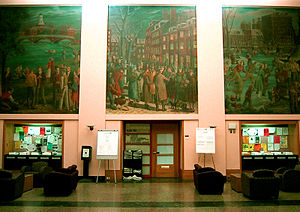
Daniel Reetz loves trash bins.
A big one in Fargo, N.D., was where he found most of the materials he used to build a scanner that was fast enough to scan a 400-page book in about 20 minutes without cracking the binding.
The two Canon PowerShot A590 cameras and two lights that he lashed together with a few pieces of acrylic and wood cost him about $300 in all, considerably less than the $10,000 commercial book scanners that were on the market.
When he was finished, Mr. Reetz, now 29 and working at Disney Research’s laboratories, put his 79-step how-to guide on a Web site. Since the post went up nearly two years ago, about 1,000 people have joined Mr. Reetz’s forum, and about 50 have built their own scanners from castoff furniture, aircraft aluminum, whiskey boxes and plastic foam.
Do-it-yourselfers like Mr. Reetz may not know it, but their tinkering is challenging a deeply entrenched tenet of economic theory: that producers, not consumers, are the ones who innovate.
Since the Austrian economist Joseph A. Schumpeter published “The Theory of Economic Development” in 1934, economists and governments have assumed that the industrial and business sectors are where ideas for products originate. A complex net of laws and policies, from intellectual property rights to producer subsidies and tax benefits, have flowed from this basic assumption.
However, pathbreaking research by a group of scholars including Eric A. von Hippel, a professor of technological innovation at M.I.T.’s Sloan School of Management, suggests that the traditional division of labor between innovators and customers is breaking down.
Financed by the British government, Mr. von Hippel and his colleagues last year completed the first representative large-scale survey of consumer innovation ever conducted.
What the team discovered, described in a paper that is under review for publication, was that the amount of money individual consumers spent making and improving products was more than twice as large as the amount spent by all British firms combined on product research and development over a three-year period.
“We’ve been missing the dark matter of innovation,” Mr. von Hippel said from his office in Cambridge, Mass. “This is a new pattern for how innovations come about.”








